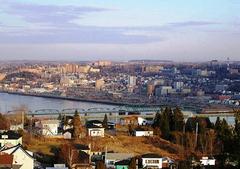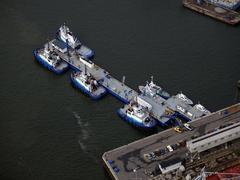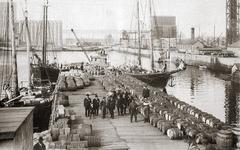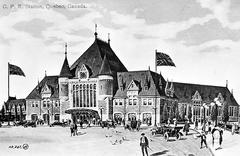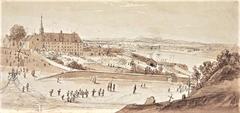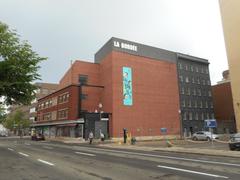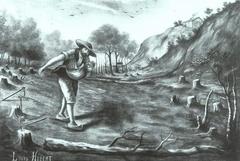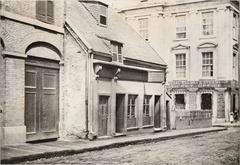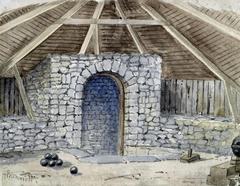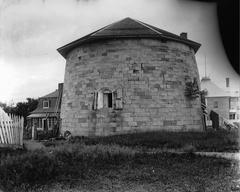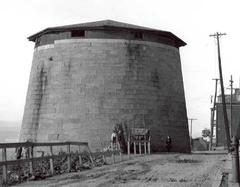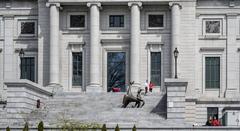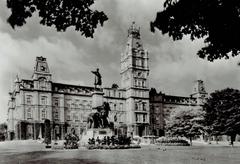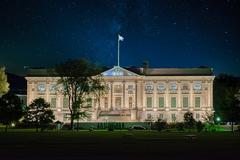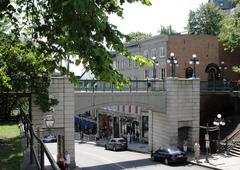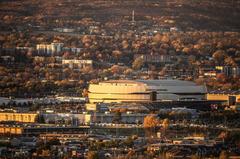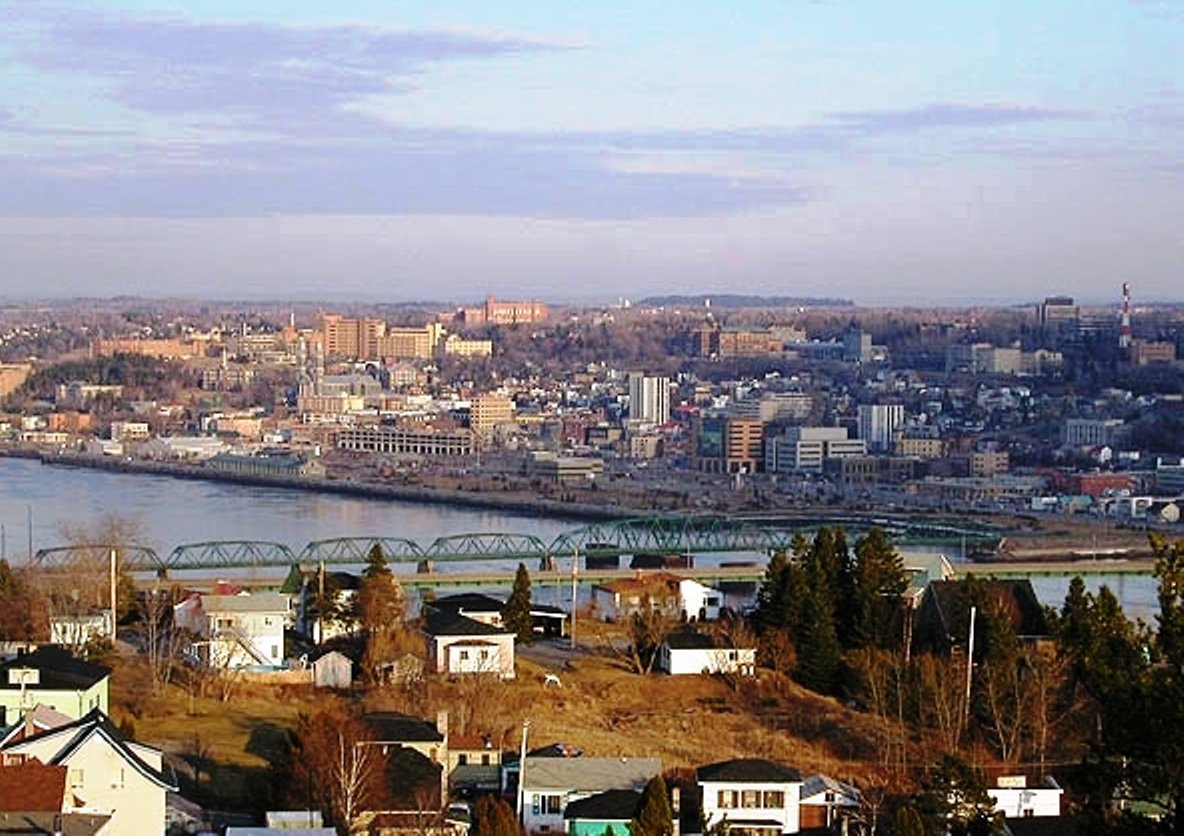
Visiting the Port of Quebec: Quebec City, Canada Guide — Tickets, Hours, and Attractions
Date: 14/06/2025
Introduction: The Port of Quebec — History, Cultural Significance, and Must-See Status
Nestled along the St. Lawrence River, the Port of Quebec stands as one of Canada’s most historic and vibrant maritime gateways. Established in the early 16th century, it has played a decisive role in trade, immigration, and cultural exchange, profoundly shaping Quebec City’s identity and the nation’s development. Visitors encounter a captivating blend of old-world charm and modern infrastructure, with the port serving as both a living museum and a dynamic transit hub. From the arrival of Jacques Cartier in 1535 and Samuel de Champlain in 1608 to its peak as North America’s third-largest port in the 19th century, the Port of Quebec offers a unique perspective on centuries of economic and societal evolution (Port of Quebec History; The Canadian Encyclopedia).
Today, the port is a bustling commercial and cruise terminal, welcoming thousands of visitors each year. It provides seamless access to Quebec City’s UNESCO World Heritage–listed Old Quebec, iconic sites like the Château Frontenac, and a host of cultural experiences. Modern terminals such as Ross-Gaudreault and Terminal 30 accommodate large vessels year-round, reflecting the port’s strategic significance and state-of-the-art facilities (Port Overview; Cruise Port Advisor). The waterfront features parks, public art—including the illuminated Bunge grain silos—and North America’s first harbour bath at Bassin Louise (Quebec-Cite; Afternoon Tea Reads).
This guide provides essential information on visiting hours, ticketing, accessibility, transportation, nearby attractions, seasonal events, and cultural highlights. Whether arriving by cruise ship or exploring on foot, understanding the port’s rich past and modern amenities will enrich your visit to this historic Quebec City landmark (About2Cruise).
Contents
- Historical Importance and Evolution
- Origins and Growth
- Immigration Gateway
- 19th and 20th Century Developments
- Economic and Strategic Significance
- Role in Tourism and Cruise Industry
- Visitor Information: Hours, Tickets & Accessibility
- Commitment to Sustainability and Community
- Cultural and Social Impact
- Modern Infrastructure and Visitor Experience
- Frequently Asked Questions (FAQ)
Historical Importance and Evolution
Origins and Growth
The Port of Quebec is the oldest in Canada, central to both local and national development since the arrival of European explorers. Jacques Cartier’s landing in 1535 and Samuel de Champlain’s founding of Quebec City in 1608 marked the beginnings of what would become a major fur trade and maritime hub. By the early 1800s, the port ranked third in North America, driven by the booming lumber trade and shipbuilding (Port of Quebec History).
Immigration Gateway
Between 1815 and 1851, over 800,000 British and Irish immigrants arrived through the Port of Quebec, profoundly shaping the city’s multicultural fabric and infrastructure (The Canadian Encyclopedia).
19th and 20th Century Developments
The late 19th century saw a shift as the timber trade declined and rail networks expanded. Despite these changes, the port retained its economic relevance, undergoing significant redevelopment in the 20th century, notably the construction of deep-water wharves in Beauport (1960) and the creation of the Québec Port Authority in 1983 (Port of Quebec History). More recently, waterfront revitalization and a pivot to cruise tourism have transformed the area, especially for the city’s 400th anniversary in 2008.
Economic and Strategic Significance
As a major international trade hub, the Port of Quebec features a rare 15-metre water depth at low tide, allowing year-round access for large vessels (Port of Quebec Press Release). Its intermodal infrastructure links maritime, rail, and road networks, supporting nearly 30 million tonnes of cargo annually and facilitating trade with about 50 countries. The port supports roughly 12,000 jobs and contributes $2 billion to the regional economy (Port Overview). Its strategic location at the confluence of the St. Lawrence and Saint-Charles rivers makes it a pivotal commercial and administrative center (Britannica).
Role in Tourism and Cruise Industry
Cruise Destination
Since 1991, the Port of Quebec has become the leading cruise destination on the St. Lawrence River. In 2025, 21 cruise lines, 31 ships, and over 100 stopovers are scheduled (The Canadian Encyclopedia; Port of Quebec Press Release).
Visitor-Friendly Facilities
Cruise terminals—including Cruise Terminal 30 and the Ross-Gaudreault Terminal—are within walking distance of Old Quebec, a UNESCO World Heritage site. The Port of Québec Oasis at Bassin Louise, featuring North America’s first harbour bath, is a unique highlight (Port of Quebec History).
Activities and Attractions
The port area offers open-air shows at the Agora, Baie de Beauport beach, La Cale patio dining, and more than 30 activities (Port of Quebec Cruises). Nearby natural attractions such as Montmorency Falls and Canyon Sainte-Anne further enrich the visitor experience.
Visitor Information: Hours, Tickets & Accessibility
Visiting Hours
The port is accessible year-round, with cruise terminals and visitor areas typically open from 8:00 AM to 8:00 PM during peak cruise season (May–October). Specific hours may vary, so check the official website before your visit.
Tickets and Entry
General access to the port area is free. Tickets are required for guided tours, cruises, and special events, available both online and at terminal kiosks. Cruise tickets and packages are sold through respective operators.
Getting There
Located downtown, the port is easily reachable by public transit, taxi, or car. Parking is available nearby. Shuttle services connect the terminals with key city attractions for cruise passengers.
Accessibility
The Port of Quebec provides ramps, elevators, designated parking, and staff assistance to ensure accessibility for visitors with disabilities.
Recommended Nearby Attractions
- Old Quebec: Historic streets, fortifications, shops, and cafes
- Château Frontenac: Iconic hotel with tours and panoramic views
- Rue Saint-Paul: Antique shops and boutiques
- Montmorency Falls: Dramatic waterfall just outside the city
Special Events and Guided Tours
The port hosts festivals, open-air concerts, and walking tours focused on maritime history and local culture. Check the events calendar for current offerings.
Commitment to Sustainability and Community
The Port of Quebec’s 2035 Vision emphasizes environmental stewardship, biodiversity protection, and responsible management (Port of Quebec Press Release). Investments such as the $15.5 million restoration in 2018 support this commitment (Port of Quebec History). Collaboration with partners ensures tourism development aligns with economic, social, and environmental priorities.
Cultural and Social Impact
The port’s legacy as an immigration gateway has fostered Quebec City’s multicultural identity (The Canadian Encyclopedia). The Old Port district is now a lively area with galleries, antique shops, and public art, such as the Cement Eclipses sculpture trail (Québec Cité). Its harmony with Old Quebec’s architecture enhances the city’s cultural richness (Britannica).
Modern Infrastructure and Visitor Experience
Advanced cruise terminals, deep-water wharves, and efficient connections make the port welcoming for both commerce and tourism (Port Overview). The restored port layout, waterfront parks, panoramic restaurants, and the Bassin Louise harbour bath ensure a memorable visit (Afternoon Tea Reads). Ongoing projects, including a deep-water container terminal, aim to boost sustainability and capacity (Port Overview).
Frequently Asked Questions (FAQ)
Q: What are the Port of Quebec visiting hours?
A: Generally 8:00 AM–8:00 PM during cruise season (May–October); check facility-specific hours online.
Q: How do I buy tickets for tours or cruises?
A: Port access is free; tickets for tours and events are available online or at the port.
Q: Is the Port of Quebec accessible?
A: Yes, with ramps, elevators, designated parking, and assistance available.
Q: What attractions are nearby?
A: Old Quebec, Château Frontenac, Rue Saint-Paul, Montmorency Falls, and more.
Q: Are guided tours available?
A: Yes, seasonal guided tours and cultural events are available—check the events calendar for details.
The Old Port: A Vibrant Waterfront Experience
The Old Port (Vieux-Port) is a lively district along the St. Lawrence River, offering history, culture, and modern amenities. The Ross-Gaudreault Cruise Terminal and pedestrian routes offer easy access to Old Quebec’s picturesque streets, shops, and art galleries (Cruiseports.ca; Quebec-Cite).
Water Excursions and River Cruises
Boat tours and cruises depart from the Old Port, providing stunning city and river views. The Quebec-Levis ferry offers panoramic crossings, with tickets available on site or online (Cruiseports.ca).
Public Art and Illuminated Silos
At night, the illuminated Bunge silos recreate the aurora borealis, while the Cement Eclipses sculpture trail adds artistic flair (Quebec-Cite).
Bassin Louise Harbour Bath
The Port of Québec Oasis at Bassin Louise features North America’s first harbour bath, open in summer for urban swimming (Quebec-Cite).
Historic and Cultural Attractions
- Îlot des Palais: Immersive exhibits on colonial history at Quebec’s first brewery site (Quebec-Cite)
- Musée de la civilisation: Interactive exhibitions on Quebec’s society, history, and culture
- Gare du Palais: Historic train station and architectural gem
Iconic Landmarks and Culinary Experiences
- Château Frontenac: Guided tours and panoramic boardwalk views (Cruiseweb.com)
- The Citadelle: National Historic Site with guided tours and military ceremonies
- Plains of Abraham: Urban park and historic battlefield
- Culinary specialties: Poutine, tourtière, cretons, and maple desserts served at river-view terraces (Cruiseweb.com; Quebec-Cite)
Shopping, Markets, and Festivals
- Marché du Vieux-Port: Market for maple syrup, local wool, and souvenirs (Cruiseweb.com)
- Seasonal events: From spring to fall, enjoy festivals, concerts, and cultural celebrations (Quebec-Cite)
Practical Visitor Tips
- Visiting Hours: Cruise terminals operate daily from April to November; check attraction websites for specific times.
- Tickets: Book in advance for tours and popular sites.
- Accessibility: Most major attractions are wheelchair accessible.
- Transportation: Walk, use public buses, taxis, or the funicular between lower and upper town.
- Currency: Canadian dollars; some places accept US dollars.
- Weather: Dress for the season—summers are warm, winters are cold.
Getting to the Port of Quebec
By Air: Québec City Jean Lesage International Airport is 25 minutes from the port; taxis and rideshare services are available (About2Cruise).
By Train: Gare du Palais is a 10-minute walk from cruise terminals (About2Cruise).
By Car: Parking is available at the port; reserve in advance during peak season.
By Public Transport: RTC buses connect the city to the port.
By Ferry: The Quebec-Lévis ferry docks near the terminals (Afternoon Tea Reads).
Cruise Terminals and Facilities
- Ross-Gaudreault Terminal (Wharf 20/21): Near Old Quebec and Petit-Champlain (Cruise Port Advisor)
- Terminal 30 (Wharf 30): Modern facility with shuttles to the Old City (Cruise Port Advisor)
- Amenities: Luggage handling, customs, lounges, tourist info, and accessibility features (Port Quebec)
Customs, Security, and Travel Tips
- Passports: Required for most international visitors; NEXUS lanes available (Seven Days VT).
- Arrive Early: Allow 2–3 hours for check-in and security.
- Pets and Food: Dogs require rabies vaccination. For returning to the U.S., check restrictions on food and goods (Seven Days VT).
Accommodation and Accessibility
- Nearby Hotels: Old Port and Petit-Champlain offer boutique hotels within walking distance; Upper Town options include the historic Château Frontenac (About2Cruise).
- Accessibility: Terminals and most attractions are wheelchair accessible, though Old Quebec has steep, cobblestoned streets.
- Shuttle Services: Connect cruise terminals with major attractions.
Services for Boaters
- Quebec City Marina: Docking, launches, towing, and storage available; fees posted online (Marina Port Quebec).
- Marina Address: 155 Abraham-Martin Street, Québec, QC G1K 8N1.
Local Attractions Within Walking Distance
- Musée de la civilisation (QuebecCity101.com)
- Marché du Vieux-Port
- Petit-Champlain and Place Royale
- Boardwalks and Parks
Events and Festivals
The Old Port hosts major festivals, including the New France Festival each August with historic reenactments and parades (QuebecCity101.com).
Summary: Key Points and Final Tips
The Port of Quebec is a historical and contemporary gateway to Quebec City, blending centuries of maritime legacy with modern comfort and accessibility. Its strategic location, advanced infrastructure, and proximity to world-class attractions make it a must-visit destination (Port of Quebec History; The Canadian Encyclopedia). The port’s commitment to sustainability, vibrant event calendar, and integration of public art and recreation guarantee a rewarding visitor experience (Port Overview; Quebec-Cite).
Tips for Visitors:
- Check the latest visiting hours and event schedules.
- Reserve tours, tickets, and parking in advance.
- Use the Audiala app for updates, event listings, and exclusive offers.
- Follow Audiala on social media for travel inspiration and real-time news.
Official Sources and Further Reading
- Port of Quebec History (https://www.portquebec.ca/en/about/history/)
- The Canadian Encyclopedia (https://www.thecanadianencyclopedia.ca/en/article/port-of-quebec)
- Port of Quebec Press Release (https://www.portquebec.ca/en/press-release/international-cruise-activity-at-the-port-of-quebec-continues-in-spring-2025/)
- Port Overview (https://business.portquebec.ca/en/port-overview/)
- Quebec City Old Port Guide (https://www.quebec-cite.com/en/old-quebec-city/old-port)
- Cruise Port Advisor (https://cruiseportadvisor.com/port/quebec-city-qc/cruise-terminal-information/)
- Afternoon Tea Reads (https://afternoonteareads.com/things-to-do-in-quebec-city-canada/)
- About2Cruise (https://about2cruise.co.uk/quebec-city-canada-cruise-ship-passenger-departure-port-guide/)
Explore the Port of Quebec and discover why it remains a cornerstone of Canadian history and a highlight of any visit to Quebec City.
